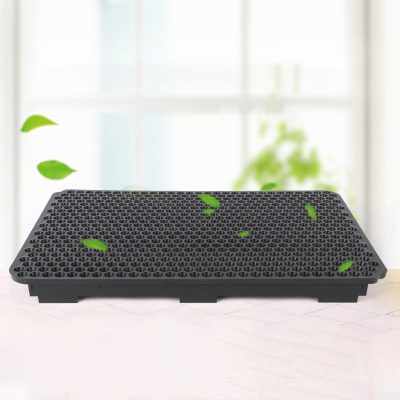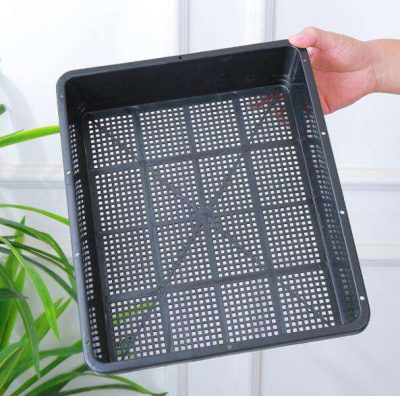Proper use of plant trays is essential for successful seed germination. Here’s a step-by-step guide on how to use plant trays effectively for seed germination:
- Choose the Right Plant Trays: Select plant trays with individual cells or compartments that are appropriate for the size of your seeds. Ensure that the trays have adequate drainage holes or a bottom tray to prevent waterlogging.
- Prepare the Plant Trays: Clean and sanitize the plant trays before use to prevent the spread of diseases. Wash the trays with warm soapy water and rinse thoroughly. You can also disinfect them with a diluted bleach solution (1 part bleach to 9 parts water) or use a natural disinfectant.
- Fill the Cells with Seed Starting Mix: Fill each cell or compartment of the plant tray with a high-quality seed starting mix. The mix should be light, well-draining, and sterile. Avoid using garden soil, as it can contain pathogens and may not provide optimal conditions for seed germination.
- Sow the Seeds: Follow the instructions on the seed packet for proper sowing depth and spacing. Make small indentations or holes in the seed starting mix using your finger or a dibber. Place one or two seeds in each cell, and cover them with the recommended amount of seed starting mix. Gently press the mix down to ensure good seed-to-soil contact.
- Label the Trays: Use plant labels or popsicle sticks to label the trays with the name and date of the seeds sown. This will help you keep track of the different plant varieties and their germination progress.
- Water the Seeds: Use a misting spray bottle or a watering can with a fine rose attachment to water the seeds gently. Ensure that the water is evenly distributed throughout the tray. Avoid overwatering, as it can lead to waterlogging and affect seed germination. The seed starting mix should be moist but not saturated.
- Cover the Trays (Optional): Some seeds benefit from being covered to create a more humid environment. You can cover the trays with a clear plastic dome or plastic wrap to retain moisture. Remove the cover once the seeds have germinated to allow for proper air circulation.
- Provide Adequate Light and Temperature: Place the trays in a warm and well-lit location. Most seeds require temperatures between 65-75°F (18-24°C) for optimal germination. If necessary, use a seedling heat mat to provide consistent bottom heat.
- Monitor and Maintain Moisture: Regularly check the moisture level of the seed starting mix. Water the trays whenever the top layer feels dry, ensuring that the mix stays evenly moist. Avoid waterlogging, as it can lead to damping-off or root rot.
- Remove Weak or Overcrowded Seedlings: Once the seedlings have emerged, thin out any weak or overcrowded seedlings. This allows the remaining seedlings to have enough space, light, and nutrients for healthy growth.
- Gradually Harden Off Seedlings: Before transplanting the seedlings outdoors, gradually expose them to outdoor conditions to strengthen their stems and acclimate them to sunlight and wind. Start with a few hours of outdoor exposure, gradually increasing the duration over a week or two.
By following these steps, you can effectively use plant trays for successful seed germination. Remember to provide proper care, including adequate light, moisture, and temperature, to promote healthy seedling growth.








